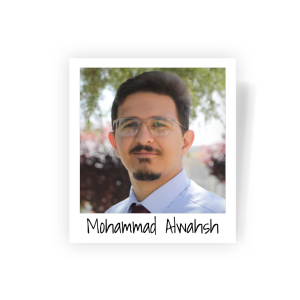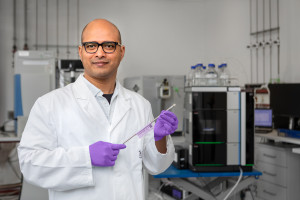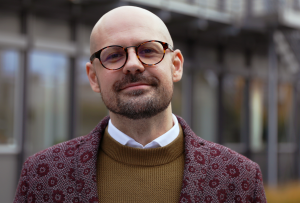Dortmund, 22nd April 2025
In recent months, current and former employees of the institute have reported on ISAS Kompakt about the exchange of data, ideas and methods across disciplines and national borders. Their diverse perspectives and experiences in industry, universities and non-university research institutions form a network of valuable connections, which is one of the foundations of interdisciplinary research at ISAS.
So far, Dr Saskia Venne and Dr Julia Lill have reported on their move to the pharmaceutical industry, while Adrian Sebuliba chose the opposite path into academic research. Prof Dr René Zahedi provided insights into the international research network he is currently expanding in Canada. In his statement, Dr Jianxu Chen emphasised the unique opportunities that arise from experience in different scientific systems.
The last statement in this series (for the time being) comes from Dr Mohammad Ibrahim Alwahsh. He worked as a research associate at ISAS. The pharmacologist was already familiar with the research at the institute through a scholarship that brought him to Dortmund in 2018. He is now Vice Dean of the Faculty of Pharmacy and Assistant Professor of Toxicological Pathology at Al-Zaytoonah University in Jordan. He told the editorial team about the role his time at ISAS played in his professional career and how he remains in contact with the institute.

I was a PhD student at the Medical Faculty Mannheim of Heidelberg University, when I decided to pursue the work for my dissertation at ISAS. I chose the institute because of its high-quality research, supportive academic environment, and the opportunity to collaborate with excellent colleagues. I found all the techniques and instruments necessary for my research, where I focused on developing methods to improve the treatment of a rare form of cancer in the thymus gland. Using nuclear magnetic resonance (NMR) spectroscopy, me and my colleagues managed to measure the live reaction to chemotherapeutic agents in 3D models for the first time. We were also able to highlight potential biomarkers for diagnosis and treatment of thymoma and thymic carcinoma.
During my time as a PhD student and PhD representative at ISAS I gained invaluable research skills, a deeper understanding of my field and lifelong connections with great colleagues. The most important thing is to be patient, knowing that everything will eventually work out – even if it takes longer than expected. As a significant benefit of my time in Dortmund, I have published numerous papers in high-ranking journals and worked on a patent. This work is ongoing and continues to become increasingly interesting. Even though I have completed my PhD, I still visit ISAS annually for collaborative projects.
Additionally, I thoroughly enjoyed experiencing different cultures, which I consider one of the most important aspects of my time at ISAS. The institute actively promotes not only internal, but national and international collaboration by encouraging students and research associates to participate in workshops and conferences. I can also recommend exchange programmes, for example with the German Academic Exchange Service (Deutscher Akademischer Austauschdienst). In my case, it introduced me to the NMR Metabolomics group at ISAS and was the starting point for the collaboration with Dr Roland Hergenröder.
Currently, I am balancing teaching and research, which is undoubtedly more challenging than focusing solely on research. However, with time, I have been able to adapt and manage both responsibilities efficiently. This is also due to numerous workshops and training programmes that were offered during my PhD at Heidelberg and Dortmund, that enable students to prepare for their next steps in academia or the industry.
Dr Mohammad Ibrahim AlWahsh Picture: Al- Zaytoonah University Jordanien








